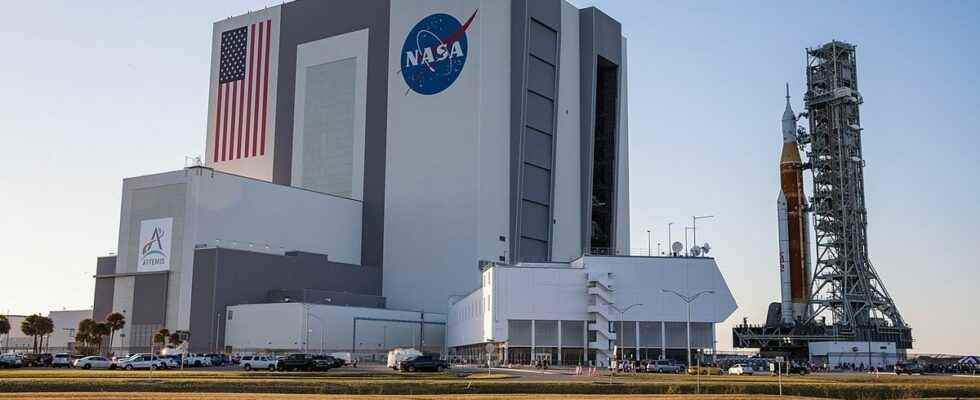The Kennedy Space Center © NASA/Kim Shiflett
Decidedly, it is to believe that someone has cast a bad spell on NASA. After several failures, the new attempt to launch the SLS rocket and the Orion shuttle as part of the Artemis I return mission to the Moon is once again postponed. Scheduled for next Monday, November 14, takeoff has now been postponed to November 16 at the earliest, NASA announced. This is due to subtropical storm Nicole, which is gaining strength in the Atlantic Ocean and is currently heading towards Florida where the Kennedy Space Center is located.
From Storm to Hurricane
At the start of the week again, the American space agency wanted to be reassuring and intended to maintain its launch attempt, explaining on a daily basis Florida Today : “NASA is working with Space Force and the National Hurricane Center to monitor Subtropical Storm Nicole. […] Based on current forecasts, officials have determined that the Space Launch System rocket and Orion will remain on launch pad 39B. Kennedy Center crews will continue to monitor weather conditions, ensure all personnel are safe, and assess the status of the attempted launch of the Artemis I mission from Monday, November 14.”
NASA is not the only one to encounter Nicole on her way. SpaceX also had to postpone the launch of a rocket from Cape Canaveral originally scheduled for Tuesday. In the case of Artemis, the agency confirmed a new two-hour firing window on November 16 at 1:04 a.m. local time (7:04 a.m. in France). However, other fallback slots are envisaged, in particular on November 19, in the event that the weather situation still does not allow take-off.
This Monday, November 7, Nicole was 764 km east of the Bahamas with winds of around 70 km / h at the maximum, but this figure climbed to 100 km / h on Tuesday and is expected to reach 120 km / h on Wednesday . We will then no longer speak of a storm but of a hurricane. The SLS rocket can withstand winds of over 130 km/h, but this would put it at risk of being damaged.
A lunar conquest that is struggling to take off
If all goes as planned by NASA, the SLS rocket, almost 100 meters high and which has never flown before, will place the Orion spacecraft in orbit around the Earth, dropping its main stage in the process. The first phase of Artemis I will then be successful. Propelled by the rocket’s cryogenic propulsion mid-stage, Orion will then embark on a perilous journey to the Moon and orbit around it at an altitude of around 100 km, revealing its far side. After a trip that could last from 6 to 23 days, the ship will set off again to return to Earth.
The SLS rocket on its launch pad ©NASA
Next will come Artemis II, scheduled for 2024, which this time will carry four astronauts. Their objective will be to fly over the Moon at an altitude of some 9000 km to check that all the equipment is working before returning to our planet. It will only be during the Artemis III mission, in 2027, that astronauts will be able to land (at the South Pole) and finally set foot on the surface of our satellite.
The road is therefore still long and strewn with pitfalls. It is an understatement to say it, it is in fact the fourth failed take-off attempt. The first, scheduled for August 29, had to be canceled due to a failure in a temperature sensor. On September 4, a liquid hydrogen leak grounded the SLS, and on September 27, Hurricane Ian once again forced NASA to cancel its plans. After this new postponement, let’s hope that the next time will be the right one.

